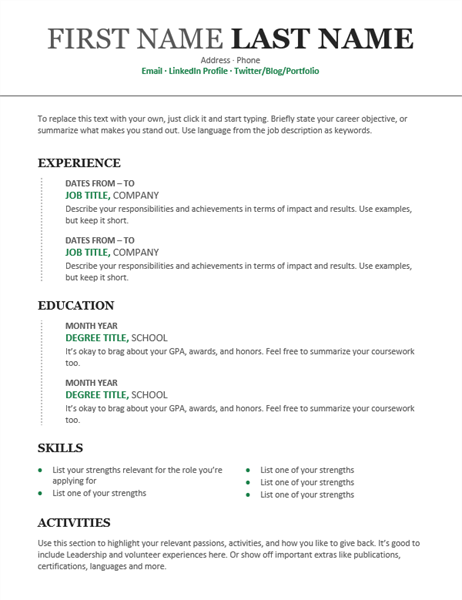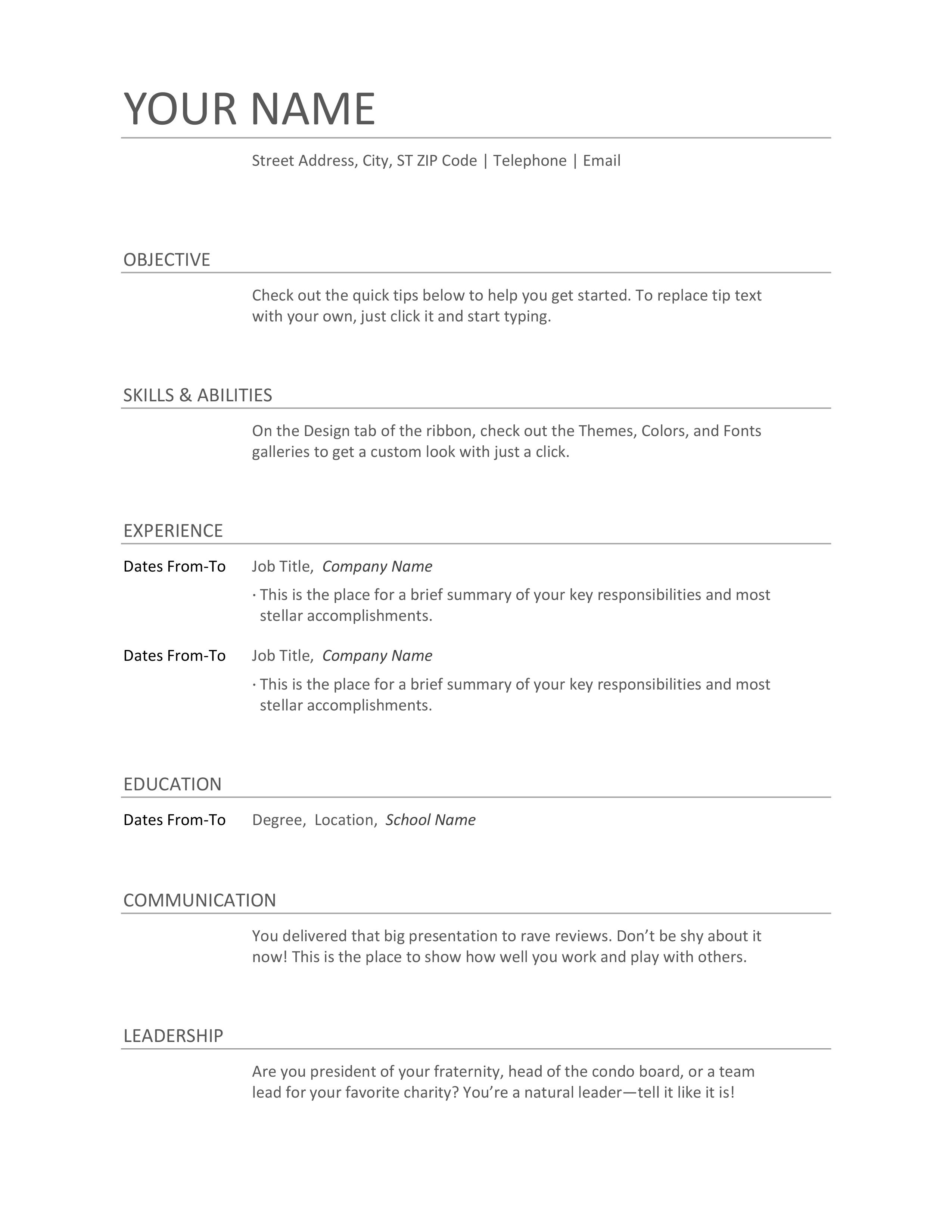Definition of a resume is a professional document which throws light upon one’s professional and personal details. Effectively, a resume helps a person to apply for a job. Further, a resume contains your work experience, education details, personal information, achievements etc. Best resume templates will help you to create a good first impression when you are applying for a job. Let us discuss the meaning and formats of resume in detail.
Suggested Videos
Meaning and Definition of Resume
Meaning of Resume or Curriculum Vitae (CV) is a brief summary or description of your educational qualifications, previous work experience, soft and technical skills, personal information, etc. Resume is sent to an employer or HR when you are applying for a job.
Chronological, Functional, and Combination Resume are three different formats of Resume. It is really important for Job seekers to understand the right format of Resume and Cover Letter.
A resume is a chance for a prospective employee to elicit his suitability for a job position to the employer. Evidently, a well-written resume can do wonders for the adventures of a job hunt.
Cover Letter is most important for freshers for creating a good first impression while job hunting. Learn how to create an effective cover letter here in detail.
Generally, the following details are common to all types of resumes
- Personal Particulars
- Academic qualifications
- Education qualifications
- Experience section: Functional or chronological
- Additional information that may include languages known and things worth mentioning
- References
Browse more Topics under Resume Writing
Common Parts Of A Resume
- Contact information: This should include one’s name, address, phone number etc.
- Objective(optional): The objective of a candidate should be in relation to the job being applied for.
- Education section: This section elicits one’s educational qualifications and details. In general, we should limit these details to the major qualifications.
- Experience section: Candidates with experience of working in the field can use this section to their advantage. Generally, the experience is listed in reverse chronological order.
- Skills: This section illustrates the various skills, strengths, and knowledge that the applicant posses, making him competent for the job.
- Projects: To point out the work done in the field of work, a candidate can use the projects section.
- Activities: The activities section puts forward the applicant’s membership in organizations.
- Honours: Lastly, the honours section can be used to showcase the applicant’s awards, achievements, and scholarships.
Formats of Resume
- Chronological Resume Format – Most commonly preferred resume
- Functional Resume Format – Resume for employees with multiple numbers of skills
- Combination Resume Format – Resume for employees with long work experience and employment history
Three most common formats of resume are Chronological Resume, Functional Resume, and Combination (Hybrid) Resume Format.
Chronological or Reverse Chronological is the most commonly preferred resume format by recruiters and Hiring Managers. Because readability of chronological resume format is easy to understand.
If you have multiple skills then you should go for a Functional Resume.
And employees with an extensive work experience should go for combination aka hybrid format. Because combination format allows showing multiple career achievements and skills.
Chronological Resume Formats
The chronological resume is the most commonly used resume in the professional world. This is primarily because this format of resume is easy to scan and puts emphasis on professional details including work history. As a matter of fact, the work experience of a candidate is listed in reverse chronological format. This makes it one of the best resume format.
In other words, a chronological resume lists out the progression of the applicant’s career from the past to the present. To point out, this type of resume puts emphasis on a candidate’s career.
Hence, such a resume is tailored for candidates with loads of experience. Employers often look for experience, because such candidates need only a little conditioning before working on projects.
A chronological resume is not an alternative for candidates who are beginning their career, changing the field of work, have gaps in career history or have frequently changed jobs.
Download the Chronological Resume format here.

Functional Resume Formats
A functional resume, unlike the other formats of resume, focuses on the skills and experiences that prove the competence of a candidate.
Evidently, it does not emphasize the work history of a candidate. Rather it highlights the skill set developed by a candidate that makes him suitable for selection.
Thus, a functional resume is not suitable for an applicant with little or no work experience. In fact, the functional resume is a nice alternative for the ones who have to skip the chronological resume.
This means a functional resume works well for people who are beginning their career, changing their field of work, have gaps in the work history or have frequently changed jobs.
Download the Functional Resume format here.

Combination Resume Formats
The combination resume lies in the middle of the two extremes, chronological and functional resume. The resume starts with a summary of the skills and strengths of the candidate followed by his work history. As can be seen, neither the work history nor the skillset is the subject matter of the resume.
This means that a combination resume provides just enough information to the employer by mentioning the work history and skillsets in a manner that neither of them gets into the limelight. In essence, this type of resume gets the best out of both the functional and chronological resume.
Download the Combination Resume format here.

Other Types Of Resume Formats
Definitely, the above-mentioned resumes are extensively used in the business world. However, there are some unorthodox ones which have made their way into this list. Some of them are:
- Infographic Resume
- Targeted Resume
- Non-Traditional Resume
Infographic Resume
Unlike the traditional resume, which uses plain text to display information, an infographic resume can use design elements to display the same information. In fact, these design elements generally include layout, colour, design, formatting, icons, and font styling.
Targeted Resume
As the name suggests, a targeted resume is a perfectly tailored resume, customized to display only the relevant skills and information to strengthen the candidature of an applicant. Of course, we need more time to build a targeted resume than a commonly used resume.
Non-Traditional Resume
A non-traditional resume may include elements like photos, graphics, graphs, charts etc. Further, it can be an online resume or a video resume. Such a resume perfectly showcases the candidate’s creativity. Evidently, a non-traditional resume finds most use in creative fields like design, journalism and so on.
Solved Example on Formats of Resume
Q: What are the different formats of a resume?
Ans: The types of resume are:
- Chronological
- Functional
- Combination or Hybrid
- Infographic
- Targeted
- Non-Traditional






Leave a Reply